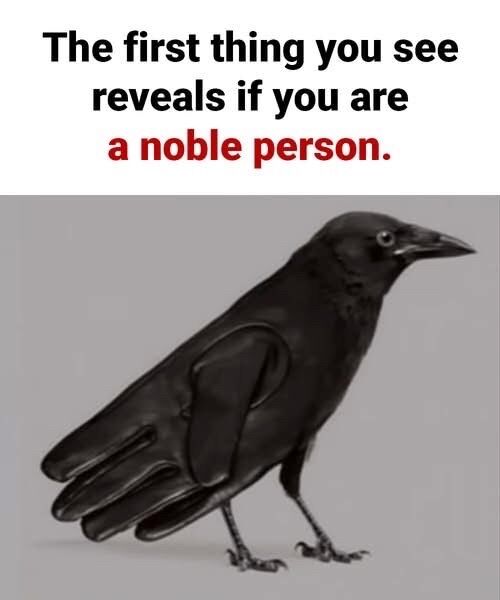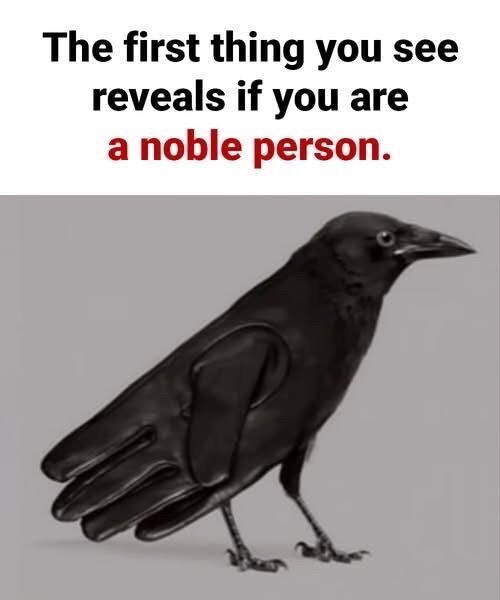Spot It First and Discover What It Says About Your Personality
They often say that the eyes reveal the soul, yet there are moments when the first detail we notice in an image reveals something even more telling about the mind. Optical illusions are usually seen as light entertainment, quick puzzles that spark a moment of curiosity. In reality they can offer a surprising window into the way we interpret the world. They can show how our subconscious guides our impressions long before we have time to think. The element that captures our attention first is not always random. It may tell a quiet story about personality, instinct, and the deeper workings of perception.
One intriguing example is an illustration that can be viewed as either a crow or a glove. The drawing appears simple, yet it contains two distinct images that sit together in plain sight. When people look at it for the first time, they usually spot only one interpretation. Many remain unaware that there is another figure hidden within the same lines. This moment of automatic recognition can say something about how each person organizes visual information. It can hint at whether someone focuses on shape, movement, symbolism, or function.

Psychologists who study visual perception suggest that the first object you recognize may reflect subtle traits. When a viewer notices the crow first, it might mean that the mind is drawn to detail, quiet observation, and careful evaluation. The crow carries long standing cultural associations with insight, intelligence, and heightened awareness. People who identify the bird immediately may have a tendency to analyze before they act. They may rely on intuition that has been sharpened by reflection.
On the other hand, those who see the glove first may respond more readily to usefulness and action. A glove is an object created to protect, to comfort, and to help someone carry out tasks with confidence. People who recognize the glove may be guided by practical thinking, empathy, and a strong desire to be helpful. They may also be inclined to focus on the human element in a situation, choosing to look for ways to support others and maintain harmony.
Some interpretations even take the idea further and suggest that these first impressions can hint at inner nobility. In this sense, nobility has nothing to do with status or privilege. Instead it refers to qualities such as integrity, sincerity, and the willingness to treat others with respect. When someone responds instinctively to an image in a way that highlights thoughtful awareness or quiet compassion, it may reveal these deeper virtues. The simple moment of recognition becomes a mirror that reflects character.
Ultimately, optical illusions are far more than playful tricks. They invite us to pause and examine the automatic processes that guide so much of our thinking. They reveal how quickly the mind chooses a path, often without conscious intention. By paying attention to what captures our gaze before anything else, we can learn something about how we move through the world. We can discover whether we lean toward introspection, toward practicality, or toward a blend of both.
The next time an illusion or a visual puzzle appears before you, consider giving yourself a moment of stillness. Notice the first thought that rises up. That instinctive perception may offer a quiet message about who you are, what you value, and the noble qualities that have been present within you all along.






